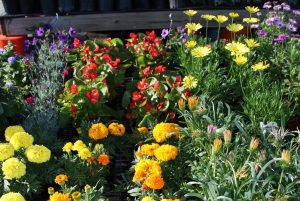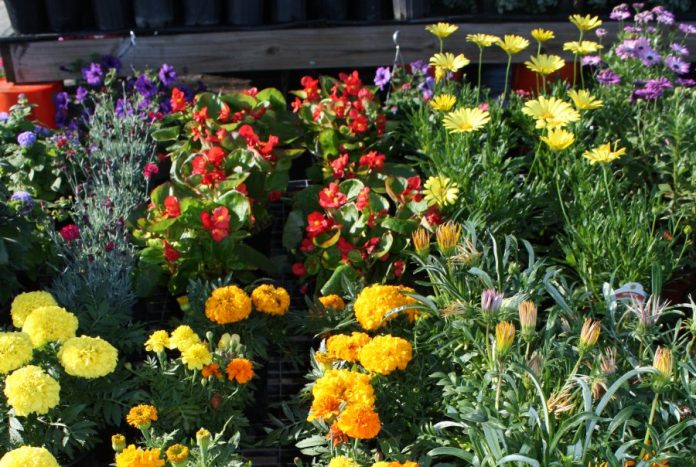 Garden plants common folk call “flowers” come in three plant categories: annuals, biennials, and perennials.
Garden plants common folk call “flowers” come in three plant categories: annuals, biennials, and perennials.
ANNUALS include easy-to-grow, soft-stem plants like vincas, zinnias, begonias, and snapdragons, and marigolds, to name several favorites. Nurseries produce table upon table of annuals for sale in 4, 6, 9, and 12 packs, pots, and hanging baskets every spring. These colorful beauties have a 1 season life cycle. Ambitious gardeners sow annual seeds every spring either inside or outdoors. The seedlings mature to make flowers and seeds during the summer then die from incurable frostbite after the first serious cold front rolls in.
BIENNIALS have a two-year life span. They start from seeds, and don’t flower until the second year. Old fashioned hollyhocks come to mind. What a glorious show of color! Stake the plants early, and put them in the background because they’re tall.
PERENNIALS grow for many years under reasonable circumstances, and come as hard-stem shrubs and trees, or those soft-stemmed “herbaceous” plants all gardeners love like daisies, irises, and yarrows. Hard stems that resist cold air is the main reason shrubs and trees live through winter weather. Herbaceous perennials or “flowers” die back to the soil, and snooze through the winter while their tough underground roots, in the main, resist the cold then come back as a larger clump of plants the next spring. Remember me? They don’t complain about a leafy blanket of mulch after the trees shed.
New perennial plants have to be thinned out every couple of years. This is usually done when the soil temperature drops after the summer heat subsides. I confess to doing the deed whenever I hear the Dig-And-Divide Muse sing. The voice of experience will tell you the caveat is that summer transplanting requires steady faith and LOTS of water while the victims get established. Don’t leave town right after you do it unless you have a dependable hired man to give things generous drinks while you frolic wherever.
Flower beds that please the eye mix the three plant categories. Perennials provide the skeleton of a mature garden. There’s a learning curve about the art of placing plants. I created a border of Shasta daisies which most of the year are about 12-inches tall. When they bloom in May, however, the flowers show up at shoulder height if the gardener is about five-three. Visitors have to wait to see what’s in back.
Here are some of my favorite tall perennial “flowers:” cannas, irises, salvias, daisies, lamb’s ears, daffodils, and lilies. So called Asian lilies aren’t partial to north Texas summers so go for day lilies and Peruvian spider lilies. Perennials are practically impossible to kill off so plan to spread newbies around the yard, give them away, or throw some of the darlings in the trash. That last option is a whole lot harder than it sounds.








.jpg)


.png)




